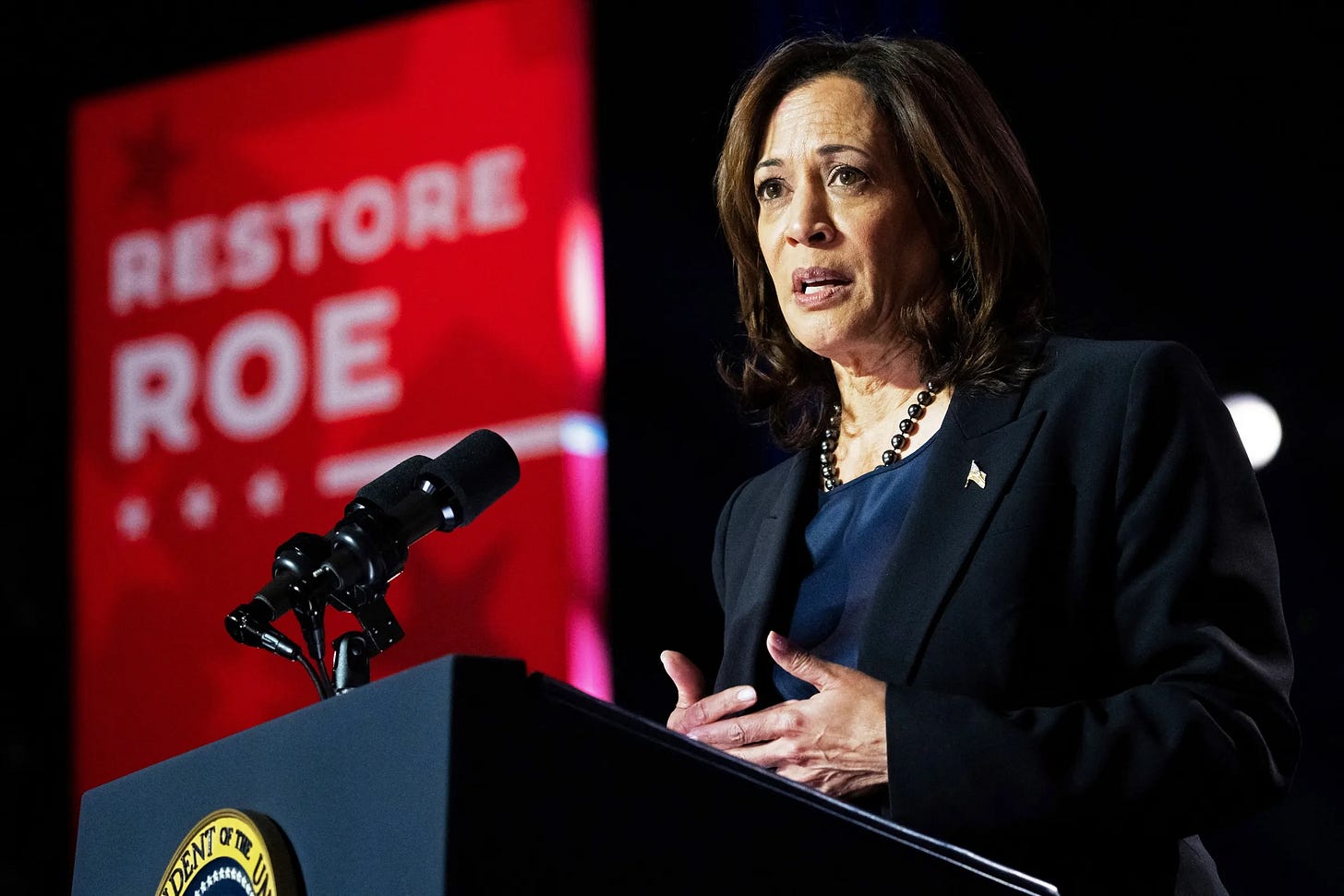How Kamala Harris Can Use Tele-Abortion to Change the Electoral Map
We know that reproductive rights is Kamala Harris’ most potent issue. Once the U.S. Supreme Court took away womens’ right to choose in the Dobbs decision, the issue catalyzed female voters across the nation. That led to major Democratic gains in the 2022 midterms, in various 2023 special elections, and in six abortion referendums held in states across the country.
The juxtaposition of Donald Trump, who appointed the three justices whose votes overturned Roe v. Wade (Brett Kavanaugh, Neal Gorsuch and Amy Coney Barrett) and has a rap sheet of misogyny a million miles long, with Kamala Harris, a consistent champion for abortion rights and possibly the first female president in American history, is the crux of this election. But there’s one way for Harris to take it even further.
After Dobbs, the practice of tele-abortion — doctors in blue states prescribing abortion medication to women in red states — grew exponentially. I was part of a group that formed a non-profit organization called Mayday.health that connects women in red states to medical providers in blue states willing to write prescriptions for mifepristone and misoprostol. Mayday shows women how to access medical care, how to access legal care if they need it, and we have helped pass legislation in multiple blue states like New York, California and Massachusetts that now provide strict legal protection for medical professionals who participate.
It has worked incredibly well — an average of 8,000 women every month in states where abortion is restricted are now obtaining abortion medication from doctors in states with shield laws. Telemedicine now accounts for 19% of all abortions and that number is only growing (and more than half of total abortions are already performed via medication). If Harris were to make the right to tele-abortion a focal point of her campaign, it could help achieve four important political goals:
(1). It makes abortion an even bigger issue in red swing states like North Carolina, Georgia and maybe even Florida. If abortion can solely be decided by a state legislature, then women in red states who want an abortion — even sometimes in cases of rape, inscest or a threat to their own lives — don’t benefit if Harris wins. But if Harris is actively supporting the right of those women to still access abortion medication via the internet, they have something new at stake.
In June, the Supreme Court upheld the FDA’s ability to make mifepristone available to women in all states (FDA vs. Alliance For Hippocratic Medicine), but solely on procedural grounds, not substantive. That means that the ability to access one of the two key medications women use for medication assisted abortions is still very much in question. A Harris administration — a Harris Department of Justice, FDA, Department of Health and Human Services and federal judicial appointees — would have a lot of power over aggressively maintaining this right and this access. A Trump administration would mean the exact opposite. That raises the stakes significantly for millions of women in states across the nation that currently ban or severely restrict abortion access.
(2). It puts further emphasis on abortion referendums already on the ballot in Arizona and Nevada, two key swing states. The more abortion dominates the news cycle, the more it helps Harris. Adding a technology enabled focal point to the issue only generates more attention, more excitement, more controversy and ultimately, more turnout for Harris.
(3). It gives women in red states another tangible reason to actively support her. It expands the map and forces Republicans to spend more time, money and political capital in states they would like to take for granted and not worry about. It also would have a positive impact on down ballot races from Congress to state legislatures and local government. No, states like Tennessee or Iowa aren’t going to turn blue in November, but the issue will make local Republicans nervous and force them to demand more resources from the national party.
(4). It drives awareness and turnout especially among younger female voters, digital natives who are voting in their first or second presidential election. In a world where their lives occur as much digitally as physically, this makes the issue more real and more familiar. According to the Pew Research Center, 76% of Americans between the ages of 18 and 29 support legal abortion. Harris is already performing well at events on college campuses. This could take it to the next level.
The topic of tele-abortion will appeal immensely to reporters, editors, pundits, podcasters, tv hosts, radio hosts, columnists, bloggers, influencers and activists on both sides of the issue. Abortion is a losing issue for Trump, but to keep an issue alive, you constantly need new angles and new ideas. This does that — it will drive attention, it will drive turnout, and it will drive Trump absolutely crazy (the more Harris brings out the worst in Trump, the more she benefits).
For Joe Biden, an 81-year old white guy who seemed completely unfamiliar with all forms of technology, tele-abortion was never going to be a winning issue. But for Kamala Harris, expanding the political terrain of choice could make a meaningful difference with the voters she needs most.




